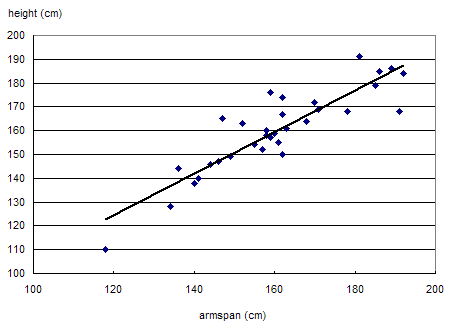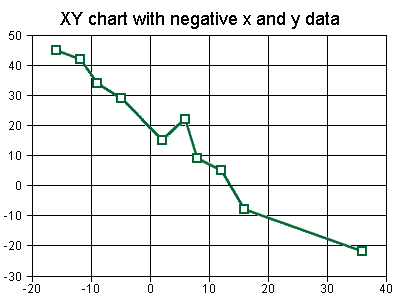Howdy folks.
Well here we are, study week 8 already. And still no sign on my
TMA01 back!! According to my tutor she can't get the
etma system to work so she has to post them, which is cool but might take ages as I think they have to go via Milton Keynes to get checked. So I might still be in for a long wait!! I did try to glean my results from her but she couldn't tell me, just saying that 'no-one did
really badly', which to me reads, 'no-one did well',
lol.
This week's study has been based on chapter 4: 'Biological processes and psychological explanation'. I really thought I would despise this chapter but in truth, I absolutely loved it
lol... I think I may possibly be slightly weird. I loved the
scientificy bits that just 'are' as opposed to the endless reams of opaque
information contained within modern psychology, theory that might possibly being this, or that, but someone else thinks differently from a different perspective blah blah blah. Just nice and simple, 'this is a cell, it's called this and it does that'.
However, there's a lot of info to try and condense this week so
i'm just going to skip around the main points. I'm definitely going to do this option for
TMA02 part 1 (if I ever get
TMA01 back). I'm half tempted to write that part of the assignment now while it's all still fresh in my mind but
i'm kidding myself if I think that's going to happen! I loath
writing TMA's and so I'm never going to be able to bring myself to do one if I haven't got to-I'll wait until the last minute, I work better under the pressure of the deadline!
Right then...
The chapter talks about
reductionism, and how some believe that some phenomenon can be explained by reducing it down to its most basic explanation-in this case, biology. Reductionists think that all psychological behaviour occur only due to biology and the brain. However, the book generally refutes this theory, stating that biology and the environment cannot be made into a dichotomy (that word again!), and that the two are very inter-related, that biology has an effect on the environment (via psychological behaviour), and how environment has an effect on biology. Psychological processes such as cognition, consciousness etc are all
emergent properties, products of the components of the brain that don't resemble the original components (I have no idea if I've
explained that right but I know what I mean!). Previously it was believed (by Descartes for example) that the brain and mind were two
separate entities (dualism), however this is no longer thought to be the case.
Now here comes the science bit (
i've come over all
loreal lol):
Cells: 'Building block' of an organism, cells have
similar properties but many have different functions. Each cell contains 46 chromosomes, which house the genetic material (genes) that pass on information, with the exception of the reproductive cells (gametes, or sperm and egg) which contain 23 chromosomes. Obviously, when two gametes meet they create one cell (zygote) with 46 chromosomes which then divides over and over again until a brand new person is formed (replication).
Genes: Genes influence the body (in terms of hair colour etc) and biology and are contained in every cell. All of the genes within each cell is known as the genotype, which determines the development of an individual. The
process of differentiation occurs, where cells start to form in order to serve different functions. However, the environment also plays a part in the developmental process, as talked about above. The product (or 'physical structure') of a person's genotype mixed with the environment are known as the phenotype.
Neurons: A cell which is concerned with communication and makes up part of the nervous system (which handles and processes information). They have two
components: the cell body and the process, which is like an extension. Groups of neurons form neural systems which form different roles. Neurons can be found predominantly in the brain but also in the spinal cord, and these two components form the central nervous system. Neurons that are not in the
cns make up the peripheral nervous system. Some of the neurons in the
pns are known as detectors, and are sensitive to issues such as touch. When these (sensory) neurons are stimulated an
electo-chemical reaction occurs. This electrical change is known as an action potential, which travels quickly to convey the information to the
cns. The action potential also travels to the motor neurons, which convey messages to muscles, and this leads to action of the muscles (
ie moving to get away from pain etc).
These messages travel from neuron to
neuron via the synapse (or 'junction') between each cell. The messages are transmitted via neurotransmitters (a chemical) from one neuron (
pre synaptic), across the synapse and into receptors in the next neuron (
post synaptic). Sometimes this can cause an effect of excitation within the
post synaptic neuron, whereby these neurons are likely to exhibit action potentials-or in can cause an effect of inhibition, which has the opposite effect to excitation. Mood and
behavioural problems can occur at the synapse. Parkinson's disease for example occurs when certain neurotransmitters are not produced, effecting motor control.
Reuptake also occurs, where neurons retake the neurotransmitters they give out rather than them being passed onto the receptors in the next cell. There are several kinds of neurotransmitters that are thought to effect behaviour-for example, schizophrenia is thought to be due in part to abnormalities within certain neurotransmitters. Depression can also be attributed to abnormalities in the
dopaminergic,
serotonergic and
noradrenergic neurotransmitters.
This is a good link.Hormones: Chemicals within the body, with certain ones that effect the nervous system, and therefore mood and behaviour. They are secreted into the blood and get transported around the body, with it's effects
occuring at a different site to the one it is originally secreted from. They are released from a gland (for example, the adrenal gland which produces adrenalin and noradrenalin and is located near the kidney and is part of the ans) and travel through the blood and are occupied by receptors at its target organ. Dopamine, serotonin, adrenalin, testosterone etc are all hormones. We all know hormones have an effect on mood-anyone who has been pregnant/knows someone who has been pregnant will know all about the
disasterous effect hormones can have on someone who dares to say, 'oh, you're putting weight on, the baby can't be that big'. Believe me, I have issued many an ass kicking over this statement in my time. Blame it on the hormones!
The Nervous System: The brain is a huge part of the nervous system. It can be divided into two parts-or hemispheres. The outer layer of the brain is know as the cerebral cortex, and it can be divided into different lobes such as temporal and frontal. The two hemispheres of the brain are connected and communicate via the corpus
callosum, which is made of up a bunch of neuron processes. There has been research into the effect of changes within the brain on behaviour. Brain damage,
ie strokes (also called lesions), can cause neurons to die, which suggests that the damage done in these areas of the brain effect that areas functions. There is lots of
eval on this on page 269. Brain imaging is a non-invasive
technology which allows us to look at the brain and the blood flow within it to determine which areas of the brain are working when certain behaviours are carried out (there are also invasive experiments that can be carried out but these have obvious ethical concerns-please don't get me started on ethics!).
There are two different sections of the nervous system: Somatic nervous system which controls skeletal muscles and
behaviour displayed outwardly, voluntary conscious behaviour. The neurons in the motor cortex, part of the brain that deals with motor control, communicate as we have seen with the spinal cord and travels down to the motor neurons in the muscles and controls them, causing a reflex reaction. Then there is the autonomic nervous system, which controls the internal workings via two
types of muscle; cardiac muscle (heart) and smooth muscle (which can be found in the walls of blood vessels or example). (Remember back to the excite and inhibit reactions we discussed earlier-these can occur in the heart, for example when we are scared the neurons can get into a state of excitement, or when we are meditating they can get inhibited).
Homeostasis: The body's way of remaining constant-neurons can only work under optimal conditions (
ie temperature) and the body exerts control in order to regulate the body and staying at an optimum-sweating for example, keeps people cool. The practise of eating and drinking (behaviour) is controlled by biological factors-our motivation to eat is to survive. Obvious links with evolution here-YAWN!
There was more in the chapter about the visual system but I really can't be bothered to go into it as I think I've already covered the basics here. Onto chapter 5!! I'm not sure how I'm going to fit that in this week, it's my eldest daughter's third birthday this week, as well as my fourth wedding anniversary (although I am still currently sans husband), it's said daughters
xmas play at nursery coming up and she keeps pestering me to put the
Christmas tree up. Also, I need to learn how to make mince-pies. I have a feeling that biological processes are a doddle in comparison to this-any tips gratefully
received!!
Until next time!
Candyflee xx




